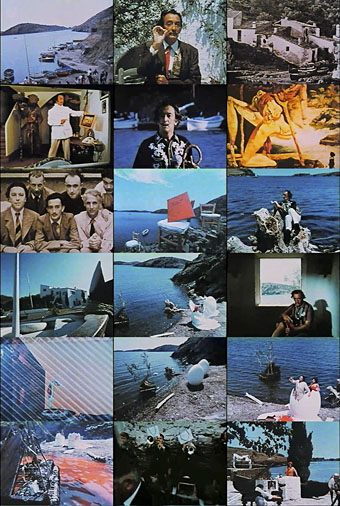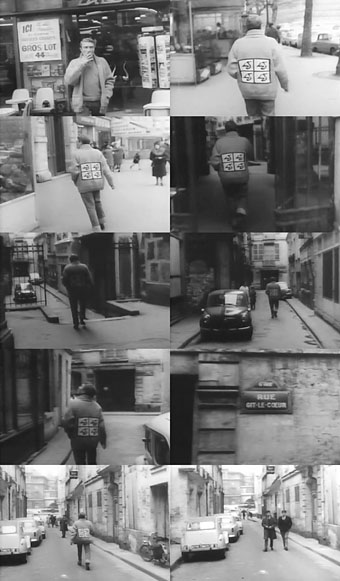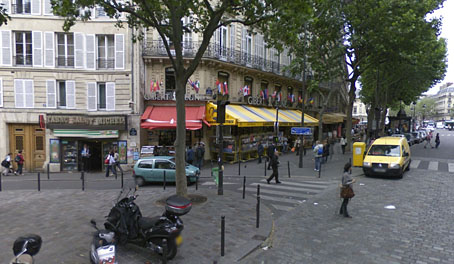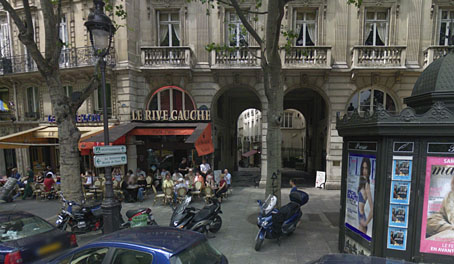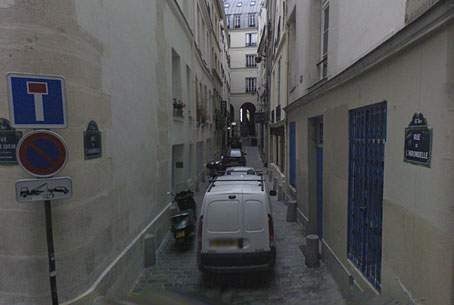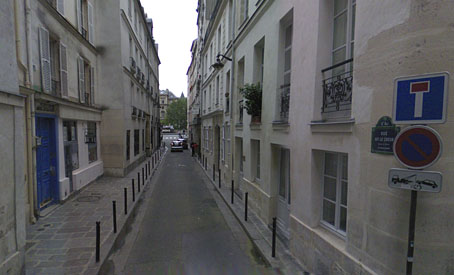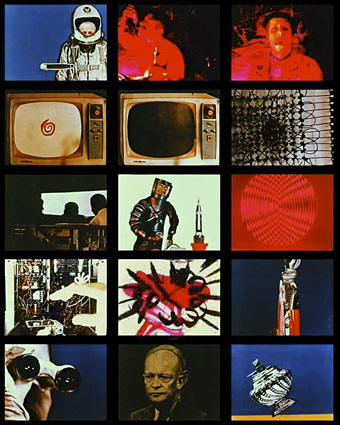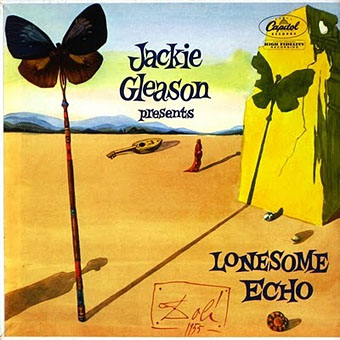
Lonesome Echo (1955) by Jackie Gleason.
Not a definitive list, I was merely browsing Discogs.com out of curiosity. For an artist eager to infiltrate every medium you’d expect there to be more involvement from Dalí with the music world. The Jackie Gleason is included here as the earliest entry for which the artist apparently provided a cover painting and a sleeve note. There’s a nice shot of the back cover on this page with its photo of Salvador and Jackie shaking hands.
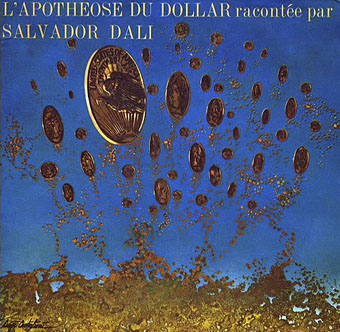
L’Apothéose Du Dollar Racontée Par Salvador Dalí (1971).
Next up is a panegyric to one of the artist’s obsessions—money—recorded on a flexidisc for Crédit Commercial de France. Difficult to imagine any bank today promoting themselves with someone dropping phrases like “divine diahrrée“. A scarce item which can however be found on Ubuweb.

Je Suis Fou De Dalí (1975).
Here the artist extemporises (in French) to a trio of dutiful journalists. Ubuweb again has the entire album, together with a handful of other recordings. This page has some details of the discussion.
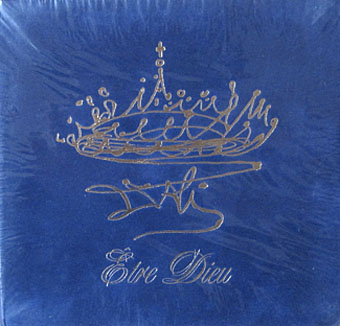
Etre Dieu has been mentioned here before owing to its connection with that cult composer of mine Igor Wakhévitch. Described as an “Opera-Poem: Audiovisual and Catarrah in six parts” it propels Dalí’s megalomania to cosmic proportions with the artist portraying a godlike version of himself. In attendance are an angel and two further Dalís, the male and female halves of an androgynous avatar with the female component being voiced by the great French actress Delphine Seyrig. The libretto is credited to Manuel Vázquez Montalban. The performance was recorded in 1974 but not released on disc until 1989. Not the best of Wakhévitch’s works at all, you’re better off with Logos or Docteur Faust.
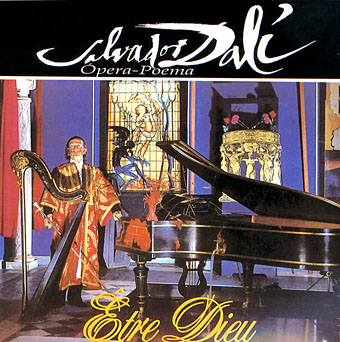
Elsewhere on { feuilleton }
• The album covers archive
Previously on { feuilleton }
• Soft Self-Portrait of Salvador Dalí
• Mongolian impressions
• Hello Dali!
• Dalí and the City
• Dalí’s Elephant
• Dalí in Wonderland
• Alejandro Jodorowsky’s Dune
• Dirty Dalí
• Impressions de la Haute Mongolie revisited
• Dalí and Film
• Salvador Dalí’s apocalyptic happening
• Dalí Atomicus
• Impressions de la Haute Mongolie


